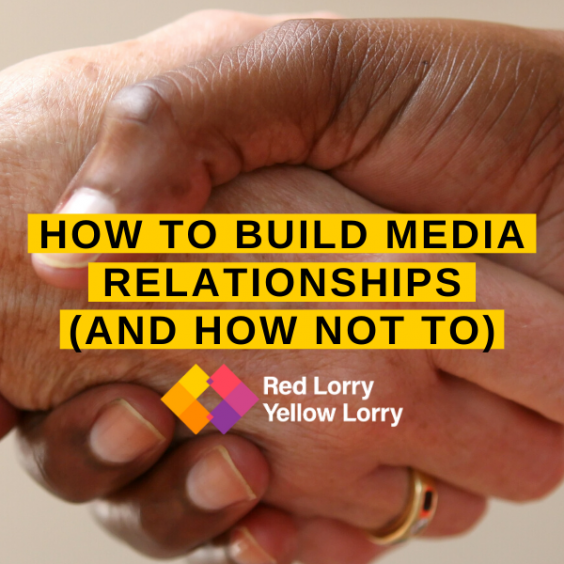As people suddenly have more time on their hands, London lorry Tristan Earl wonders whether our reading habits will change to demand more detail and greater insight from writers.
First of all, I should come clean. I’m not an avid book reader and never really have been. I’ve always enjoyed reading newspapers and magazines rather than the classics. Basically, I’m more of a short-form guy. And it seems I’m not the only one.
As our attention spans have shortened, so has much of the content and entertainment we’re being served up. For example, test match cricket is deemed by many to be an endangered species, as new jazzier and shorter formats of the game, such as Twenty20 and now The Hundred, come along to take the sport forward. Films are no longer dominating the creative urges of Hollywood talent, as many take on episodic series for platforms such as Netflix and Prime Video. And part of Twitter’s allure and success is that you can get the gist of something within 280-characters. These new norms are designed to fit into our busy modern lifestyles, where we’re never far from a screen (or two).
Lockdown benefits
Despite the preference for digestible content, there will always be a place for something a little more in-depth. The enforced lockdown that much of the world is currently experiencing in response to the COVID-19 crisis has, if nothing else, provided time for many to do things that they just can’t get around to normally. This is illustrated by the fact that 31% of Brits have been reading more since the lockdown began, particularly among 18-24-year-olds.
One thing I’ve found is that I’m able to read more long-form articles than usual and it’s made me really appreciate the art of writing again. Journalists reporting out of the constraints of producing articles for clickbait can produce some truly remarkable work. Work that can bring about change, sometimes on a global scale.
Not all long-form articles need to be so transformative though. The key is to engage the audience and tell them something they don’t know already. If it’s a good story, and the reader thinks it’s worth their attention, they’ll find the time to at least start it. Recent long-form articles that have caught my attention include topics as diverse as the regeneration of Michigan Station (by Jonathan Marcus for the BBC), where airlines are currently keeping their fleets of grounded planes (by Hugo Martin for the LA Times) and Marc Sessler’s love letter to his Cleveland Browns NFL team. While it may have taken me several sittings to work my way through them, I’m glad I did. I took away a lot, on topics that wouldn’t normally be on my radar.
Who to trust
With so much disinformation or ‘fake news’ out there, it’s hard to know who you can and can’t trust these days. This is why more in-depth work that’s rich in verified facts is now so valuable. Titles like The New Yorker and The New York Times actually take in more revenue from readers subscribing to read the content they produce than they do from advertisers. And new publications such as The Athletic have launched on the promise of giving their writers free-reign to write about what they find interesting, with the belief that people will pay to read it.
So, what makes a long-form piece of content stand out and capture the ever-shortening attention span of a reader these days? Here are some tips that can help keep readers engaged and tempt them to come back for more:
- Be a storyteller. Humanise the content where possible by including real-world examples that the reader can relate to.
- Showcase your passion and knowledge. The reader wants to know they’re in good hands and are likely to take away something insightful in return for their time. Aim to tell them something they don’t already know.
- Assume people won’t make it to the end. Don’t leave all the good stuff until the last few paragraphs as the chances are people will miss it. Use your headline, subhead and introduction, as well as supporting social media posts, to get the key message (or messages) across.
- Less can be more. You don’t have to fit every single point or idea into an article. Why not save some for a follow up instead? It’s better to be able to offer something else that may pique a reader’s interest once you have their attention and trust, than giving it all away at once.
- Presentation is everything. Don’t intimidate the reader with a wall of text. Use colourful imagery and attention-grabbing visuals (embedded videos, pictures, graphs, diagrams etc.) along with pull quotes, box-outs and bullet points to make your work more visually appealing.
- Think SEO. You want people to find your writing, so including keywords and other SEO optimisation is helpful. As this graph shows longer content (2000 words plus) produces higher search rankings. It also tends to get more backlinks. Just don’t make it sound like it’s been churned out by a robot.
- Be social. Make it obvious who has written the piece and how they can get in touch. Include your social media handles and encourage the reader to let you know their thoughts. Quite often they’ll share the work and credit the author if it’s something they have enjoyed or felt was worthwhile.
- Share with people you want to read it. Don’t rely on people finding your content. If you’ve got something to say, and you’re keen for someone in particular to hear (or read /contribute to) it, then share it with them and ask for their opinion. You never know what you may get back.
- Provide a wordcount. Let the reader know upfront how long it’s going to take them to get through the work. It’s likely to sound less than how intimidatingly small the side scroller looks.
Now is a great time to dust off that pen and get writing again. People are keen to learn, and it’s never been easier to find your audience.
What about you, dear reader? Have you rediscovered a love for long-form in these strange times? If you have, and you have any recommendations or thoughts on what makes you read something, we’d love to hear them. You can contact me @TristanEarl on Twitter, here on Linkedin, or by emailing me at tristane@rlyl.com




